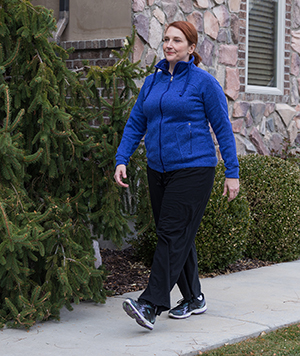After back surgery: Going home
The sooner you become active, the sooner you’ll get back to your normal routine. At the same time, you need to protect your healing back. Increase your activity level at a slow but steady pace. You may also see a physical therapist during this time. Follow any guidelines your healthcare provider or physical therapist gives you.
Your first few weeks
You’ll likely feel weak and tired at first, but you should feel a little stronger each day. Your incision may be sore. You may also feel some pain, tingling, or numbness in your back or legs. All these symptoms should decrease as your nerves heal. Keep moving as much as you can without making your pain increase. Take your pain medicine as prescribed to keep the pain from becoming intolerable. Don't start smoking again.
Your walking program
Walking is the best exercise for you after back surgery. It strengthens your back and leg muscles, increases your endurance, and relieves stress. Start by walking around the house. Build up to several walks a day. You may find it helpful to set a goal. Talk to your healthcare provider or physical therapist about setting a safe, realistic goal for yourself.
 |
| Short walks are a good way to start being active. |
Preventing setbacks
Increased pain for more than 2 hours after an activity means you’ve done too much too soon. When you feel pain, slow down and pay more attention to your posture and movements. By about the sixth week after your surgery, you should be well on the way to healing. But continue to let pain be a warning to slow down.
When to call your healthcare provider
Call your healthcare provider right away if you:
-
Feel lasting or severe pain, weakness, or numbness in your back or legs
-
Notice drainage, swelling, or increased redness around your incision or if there is a bad smell
-
Have a fever, severe headache, or extreme tiredness
-
Have trouble breathing or chest pain
-
Have problems controlling your bladder or bowels
-
Have swelling, pain, redness, or soreness in your calf, ankle, or foot